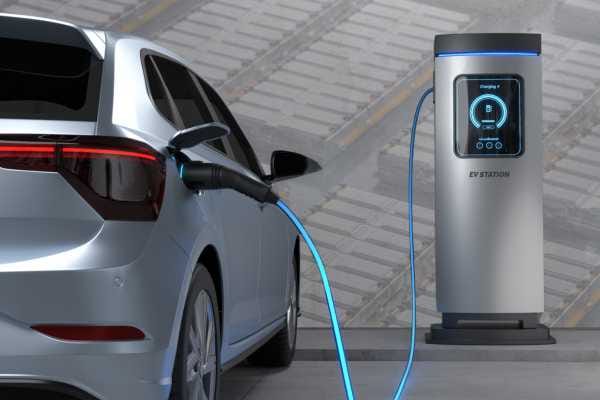The answer, big tech, is blowin' in the wind
Renewables to the rescue in our unquenchable appetite for technology upgrades.

They’re one of the most energy-intensive buildings you’ve never heard of, and the engine rooms of our online lives.
Data centres consume anything from 10 to 50 times the energy per floor space of an everyday office building. But with the boom in home automation, artificial intelligence (AI) and cloud storage, our technology footprint shows no signs of shrinking.
The heavy payload of the data centres that run these processes puts a major strain on the power grid, so there's a growing requirement for new infrastructure to be built.
But while renewable energy offers them a cleaner power source, they are rarely located in areas where large-scale wind or solar production can be easily tapped.
So for tech giants like Google, Microsoft and Amazon Web Services (AWS) to realise their clean-energy commitments, the solution is a relatively new type of renewable partnership called a power purchase agreement (or PPA).
“We’re a data-driven company. The science of climate change tells us that building a carbon-free electrical grid is an urgent global priority."
PPAs take the form of large-scale, long-term contracts, and Google says its data centre energy team first began looking into them back in 2009 as a means of buying renewable energy in very high volumes to meet the future needs of its business.
“We’re a data-driven company. The science of climate change tells us that building a carbon-free electrical grid is an urgent global priority,” said Global Director of Google’s Data Center Energy and Location Strategy Gary Demasi.
Then, in 2020 the company pledged to operate its data centres and office campuses on 24/7 carbon-free energy by 2030, along with one of its primary goals to accelerate the decarbonisation of the world’s electricity systems.
“In the future, our services will be supplied only by carbon-free energy every hour of every day,” the company said.
Rather than diverting power from existing renewable operations, Google says it will meet its clean energy commitments by investing in new projects that provide additional capacity, be it direct or indirect.
This could be building a brand new renewable project or boosting demand for renewable energy in order to encourage new investment.
It also aims to go beyond basic 'additionality' to address problems that limit the growth of the renewable industry by committing to long-term contracts rather than purchasing power on the go.
Global powerplay
To this end Google has been signing long-term PPA deals with renewable energy suppliers around the world. As well as helping it to realise its own clean-energy ambitions, they benefit renewable power developers by offering longer-term financial security.
As Google's strategy plays out, announcements have been coming thick and fast in recent years, targeting a spectrum of renewable energy sources including solar, wind and even geothermal energy.
One of its most recent PPAs is a collaboration with data centre specialist AirTrunk and renewable energy provider OX2 to boost renewable energy capacity in Australia.
Under the agreement, OX2 will build a new 25 MW solar farm in the Riverina district of New South Wales and is expected to begin generating power in 2025.
OX2 Australia Country Manager Rachel Watson described the deal with Google and AirTrunk as an “exciting project” for OX2 to be involved in. “Their commitment to buying carbon-free energy is helping to accelerate the energy transition, and get more renewable energy into the system.”
This comes on the heels of a series of power deals signed across Europe, for both solar and wind farms at sea and on land, including one of its largest offshore wind projects to date, based in the Netherlands (in partnership with the CrossWind and Ecowende consortia).
"Google's leadership in the investment of renewable energy and commitment to advancing 24/7 carbon-free energy by 2030 sets a strong example for companies across the globe"
In Ireland, Google has signed up with Power Capital Renewable Energy for 58 megawatts (MW) of new-to-the grid capacity from the Tullabeg Solar Farm, which it says will help its offices and data centre in Ireland to reach 60% carbon-free energy in 2025.
The company has been forging similar deals in the US, signing a 150 MW PPA with Ørsted last year to purchase renewable energy generated by Helena Wind Farm in Texas for the next 15 years, adding to its existing solar portfolio.
Monica Testa, Head of Origination at Ørsted Americas said: “Google's leadership in the investment of renewable energy and commitment to advancing 24/7 carbon-free energy by 2030 sets a strong example for companies across the globe and we look forward to helping them achieve that ambition."
In a departure from solar and wind, Google has also partnered with clean-energy startup Fervo on a geothermal power project that powers the same local grid that serves Google’s data centres in Nevada.
A Power Purchase Agreement – or PPA – is a contract for the purchase of power and associated renewable energy certificates (RECs) from a specific renewable energy generator. Like water flowing through a river, electricity generated in one spot cannot be directed to a specific user over the electricity grid. But by buying the power at a wholesale level directly from developers on the same grids as its own data centres, Google says it can still contribute to greening the grids where it operates.





